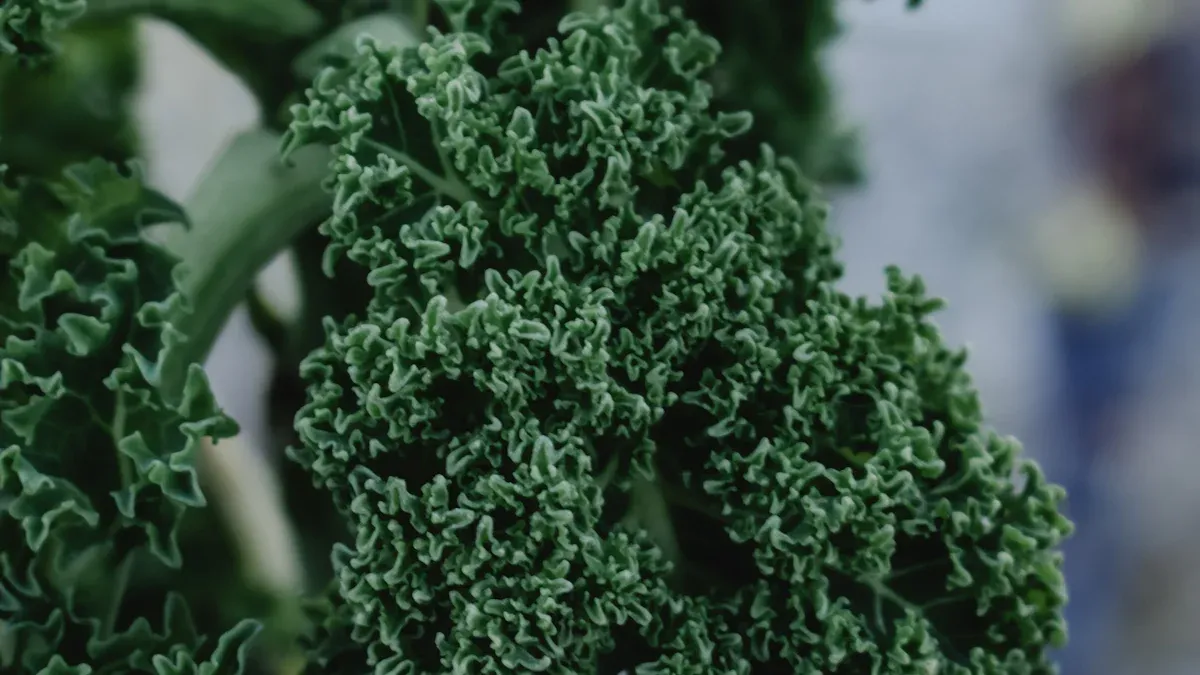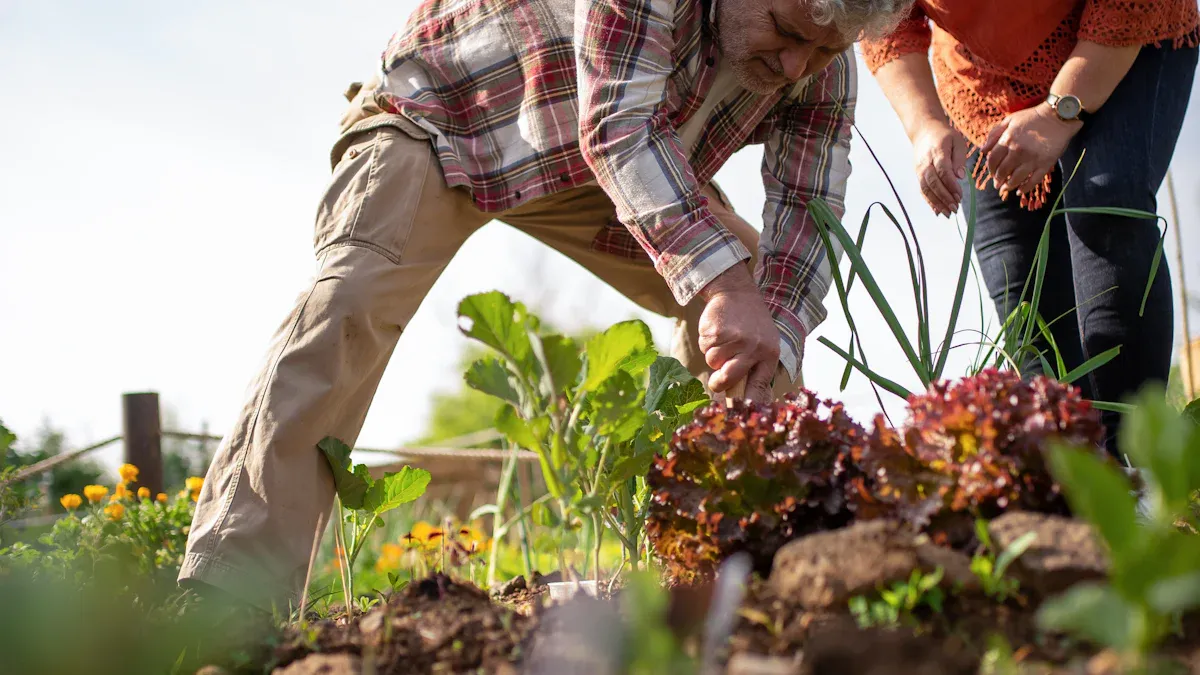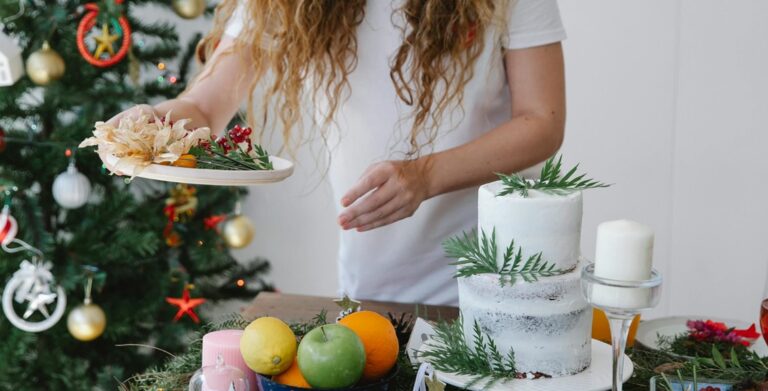
Growing kale can be challenging, often leading to frustrating pests, slow growth, or nutrient deficiencies. Fortunately, companion planting offers a natural, effective, and sustainable solution. This practice involves strategically placing different plants together. For kale, kale companion plants help deter pests by attracting beneficial insects like ladybugs and masking kale’s scent. They also improve soil health, enhancing growth and preventing diseases. This post will show you 15 of the best kale companion plants, helping you achieve a thriving garden.
Key Takeaways
- Companion planting helps your kale. It keeps pests away. It makes the soil better. This helps your kale grow strong.
- Some good plants for kale are marigolds, nasturtiums, and garlic. Marigolds stop pests. Nasturtiums attract pests away. Garlic confuses pests with its strong smell.
- Avoid planting kale near other brassicas like cabbage. Also, keep tomatoes, strawberries, corn, and sunflowers away. These plants can hurt your kale’s growth or bring pests.
- Plan your garden well. Give plants enough space. Watch your plants for problems. Adjust your plan if you see pests. This helps your kale grow best.
Kale Companion Planting

What is Companion Planting
Companion planting is an agricultural practice. You grow different plants near each other. This method offers many benefits. It helps with weed suppression. It also controls pests. You can attract beneficial insects. It maximizes your garden space. This practice increases crop productivity. It is a form of polyculture. This strategy boosts crop health. It reduces the need for chemical pesticides and fertilizers. It promotes biodiversity in your garden. This method is a popular strategy in sustainable agriculture.
Kale’s Companion Benefits
For your kale, companion planting provides specific advantages. It deters pests. It improves soil health. It enhances growth. Some companion plants release chemicals. These chemicals repel pests. For example, marigolds release thiophene. This repels nematodes. Other plants use scent masking. They release strong smells. These smells hide your kale’s scent. Pests cannot find their target. Garlic and onions do this. They deter green peach aphids. They mask the scent of kale.
Some plants act as trap crops. Nasturtiums can lure aphids away from your kale. This protects your main crop. Other companion plants attract good insects. Dill attracts syrphid larvae. These larvae eat kale pests. Green onions bring in predatory spiders. Lavender and dill produce essential oils. These oils repel aphids and caterpillars. They confuse pests. This makes them less likely to target your kale. Plants like lettuce and artichoke also confuse pests. Their different scents make it hard for pests to locate kale. Aromatic herbs like rosemary also deter pests. These kale companion plants create a balanced ecosystem. They help your kale thrive.
The Best Companion Plants for Kale: Our Top 15
You want your kale to thrive. Choosing the right kale companion plants makes a big difference. These plants work together to create a healthier garden. Here are 15 of the best companion plants for kale.
Marigolds
Marigolds are famous for keeping pests away. You can plant them around your kale. They release chemicals from their roots. These chemicals deter nematodes in the soil. Marigolds also repel common kale pests. They specifically keep cabbage moths and other insects away from your kale. Plant marigolds as a border around your kale patch. You can also tuck them between kale plants.
Nasturtiums
Nasturtiums are beautiful and useful. They act as a “trap crop.” This means they attract pests away from your kale. Nasturtiums draw in aphids, whiteflies, and cabbage loopers. These pests prefer nasturtiums over your kale. Once pests gather on the nasturtiums, you can remove the affected plants. This reduces the pest population in your garden. Plant nasturtiums near your kale. Watch them closely. Remove them if they become heavily infested with pests.
Garlic and Onions
Garlic and onions are part of the allium family. They have a very strong scent. This potent odor confuses garden pests. It makes it hard for pests to find your kale. Garlic and onions effectively repel many kale pests. Scientific studies show that planting garlic and onions among brassicas like kale reduces pest pressure. Onions are good against cabbage looper moths. Garlic is easy to plant between your kale plants. You can interplant garlic and onion bulbs or sets directly among your kale rows.
Mint
Mint is another herb with a strong smell. Its aroma deters pests like aphids and cabbage worms. Mint can spread very quickly. You should plant mint in containers. Place these containers near your kale. This way, you get the pest-repelling benefits without mint taking over your garden.
Rosemary
Rosemary is a fragrant herb. Its strong aroma helps protect your kale. Rosemary creates a “confusing cloud” of smells. This cloud masks the unique scent of kale. Pests like the cabbage moth find it harder to locate your plants. Rosemary’s essential oils are very effective. A study showed that cabbage aphids spent less time near rosemary. Rosemary’s aroma also helps against the diamondback cabbage moth. This pest is a big problem for kale. Rosemary essential oils can kill larvae and stop adult moths from laying eggs. This can reduce egg-laying by 72%. Beyond pest control, rosemary flowers attract beneficial pollinators. Plant rosemary near your kale. It creates a protective aromatic shield.
Dill
Dill is a great plant for attracting good insects. These insects eat the pests that harm your kale. Dill attracts ladybugs, hoverflies, and parasitic wasps. A study showed a 1.6-fold increase in predatory insects when dill grew with kale. These beneficial insects help control aphids and caterpillars. Plant dill near your kale. Let it flower to attract these helpful garden allies.
Cilantro
Cilantro is another herb that brings in beneficial insects. Its flowers attract ladybugs and parasitic wasps. These insects are natural predators. They help control aphids and caterpillars on your kale. Let some of your cilantro plants go to flower. This will draw in these helpful insects.
Bush Beans
Bush beans are “nitrogen fixers.” They take nitrogen from the air and put it into the soil. Kale needs a lot of nitrogen to grow well. After bush beans finish growing, they leave nitrogen in the soil. This makes the soil richer for nitrogen-loving plants like kale. You can plant bush beans near your kale. Or, you can plant kale in the same spot after your bush beans have finished their season.
Peas
Pea plants also fix nitrogen in the soil. They have a special relationship with bacteria in their roots. These bacteria change nitrogen gas from the air into a form kale can use. This process adds nitrogen to the soil. It helps your kale grow strong and healthy. Plant peas near your kale. This provides extra nutrients for robust growth.
Chamomile
Chamomile is a gentle plant with big benefits. It attracts beneficial insects to your garden. Chamomile can also improve the growth and flavor of nearby plants. Some gardeners call it a “nurse plant.” It helps other plants around it thrive. Plant chamomile near your kale. It creates a healthier environment for your vegetables.
Sweet Alyssum
Sweet alyssum is a low-growing flower. It acts as a living mulch and attracts many beneficial insects. It brings in hoverflies, ladybugs, and parasitic wasps. Hoverfly larvae eat pests like aphids and thrips. Parasitic wasps target harmful caterpillars. Sweet alyssum also attracts bees and butterflies. These insects help with pollination. Plant sweet alyssum as a border around your kale. You can also use it as a ground cover between plants.
Calendula
Calendula, also known as pot marigold, is a cheerful flower. It attracts many helpful insects to your garden. Calendula brings in hoverflies, ladybugs, and lacewings. These insects prey on common kale pests like aphids and thrips. Plant calendula near your kale. It adds beauty and pest control to your garden.
Celery
Celery can be a good neighbor for kale. It may help deter cabbage worms. Celery also grows tall. It can provide some light shade for your kale during hot parts of the day. This helps keep kale from bolting too early. Plant celery in rows next to your kale.
Cucumber
Cucumbers offer several benefits when planting near kale. They provide shade to your kale plants. This is helpful on hot days. Cucumbers also help maintain soil moisture around taller kale plants. Their large leaves can act as a weed-suppressing ground cover. Vining cucumbers can ramble under your kale. This keeps the soil cool. Plant cucumbers so their vines can spread out beneath your kale.
Lettuce
Lettuce is a great ground cover. It helps keep the soil cool and moist around your kale. This is important for kale, which prefers cooler temperatures. Lettuce can also help confuse pests. Its different scent makes it harder for pests to find your kale. Plant lettuce around the base of your kale plants.
Plants to Avoid with Kale
You want your kale to grow strong. Some plants can actually harm your kale. They are not good neighbors. You should keep them away from your kale patch.
Bad Neighbors Explained
Certain plants become “bad neighbors” for kale. They compete for vital resources. These resources include water, nutrients, and sunlight. Some plants also attract pests that love kale. Other plants release chemicals into the soil. These chemicals can stop kale from growing well. This is called allelopathy. You must understand these interactions. This helps you make smart planting choices. You protect your kale from harm.
Specific Plants to Avoid
You should avoid planting certain vegetables near your kale.
- Other Brassicas: Do not plant kale near other brassica family members. This includes broccoli, cabbage, cauliflower, and Brussels sprouts. They all share the same pests and diseases. Planting them together makes it easier for pests to spread. It also increases competition for nutrients.
- Tomatoes: Tomatoes are not good companions for kale. They can stunt kale’s growth. Tomatoes also attract pests like flea beetles. These pests also feed on kale.
- Strawberries: Keep strawberries away from your kale. Strawberries can attract slugs. Slugs love to munch on kale leaves.
- Corn: Corn grows very tall. It casts a lot of shade. Kale needs plenty of sunlight to thrive. Corn can block too much sun from your kale plants. This slows their growth.
- Sunflowers: Like corn, sunflowers grow large. They can shade out your kale. Sunflowers also release substances into the soil. These substances can inhibit the growth of nearby plants.
You should always research plant compatibility. This helps you create a harmonious garden. Your kale will thank you.
Successful Kale Companion Planting Tips

You can make your kale garden thrive. Use these practical tips for companion planting. They help you get the most from your efforts.
Planning Your Garden Layout
Think about your garden space. Plan where you will put each plant. Place taller plants like rosemary or dill where they will not shade your kale too much. You want your kale to get enough sunlight. Plant pest-repelling herbs like marigolds or mint around the edges of your kale patch. This creates a protective barrier. Consider the needs of each plant. Some plants need more water. Others need less. Group similar needs together. This makes watering easier.
Proper Spacing and Rotation
Give your plants enough room. Proper spacing helps air move around your kale. This reduces disease. It also gives each plant enough nutrients. For full-sized bunching kale, plant them 18 to 24 inches apart. If you use square-foot gardening, you can plant one full-sized kale plant per square foot. Baby kale needs less space, about 2 to 4 inches apart. Microgreens grow very close together, about 1 inch apart.

Rotate your crops each year. Do not plant kale in the same spot every season. This helps prevent pests and diseases from building up in the soil. It also keeps the soil healthy.
Monitoring and Adjusting
Watch your plants closely. Check your kale and its companion plants often. Look for any signs of pests or disease. Early detection helps you fix problems quickly.
Tip: You can use technology to help. Some systems analyze photos from your phone. They can spot aphid symptoms early. Other tools use special cameras. They detect plant stress before you see it. These tools can send you alerts. You can then act fast.
Look for small bugs on the undersides of leaves. Check young shoots and flower buds. Aphids are tiny, less than 3 mm. They can be green, yellow, or black. You might see distorted or curling leaves. Yellowing or stunted growth also signals a problem. Sticky honeydew on leaves can lead to black sooty mold. These are signs of aphid activity.
If you see pests, adjust your strategy. You can add more aromatic herbs. Basil or marigolds can repel aphids and cabbage worms. Planting near kale with onions or garlic can deter aphids and cabbage loopers. You can also remove affected leaves by hand. This keeps your garden healthy.
You now understand the power of companion planting. These 15 plants help your kale thrive. They deter pests and improve soil health. You get a more productive garden. Experiment with these strategies. Watch your kale crops flourish. You will create a balanced, thriving ecosystem in your backyard.
FAQ
What is the main benefit of companion planting for kale?
You protect your kale from pests. Companion plants also improve soil health. They help your kale grow stronger. You get a healthier, more productive garden.
What plants should you avoid planting near kale?
You should avoid other brassicas like broccoli or cabbage. Do not plant tomatoes or strawberries nearby. Corn and sunflowers also make bad neighbors. They compete for resources or attract pests.
How do marigolds help your kale?
Marigolds keep pests away. They release chemicals from their roots. These chemicals deter nematodes. Marigolds also repel cabbage moths. You can plant them around your kale patch.
Can you plant mint directly in the garden with kale?
No, you should not plant mint directly with kale. Mint spreads very quickly. It can take over your garden. You should plant mint in containers. Place these containers near your kale.


